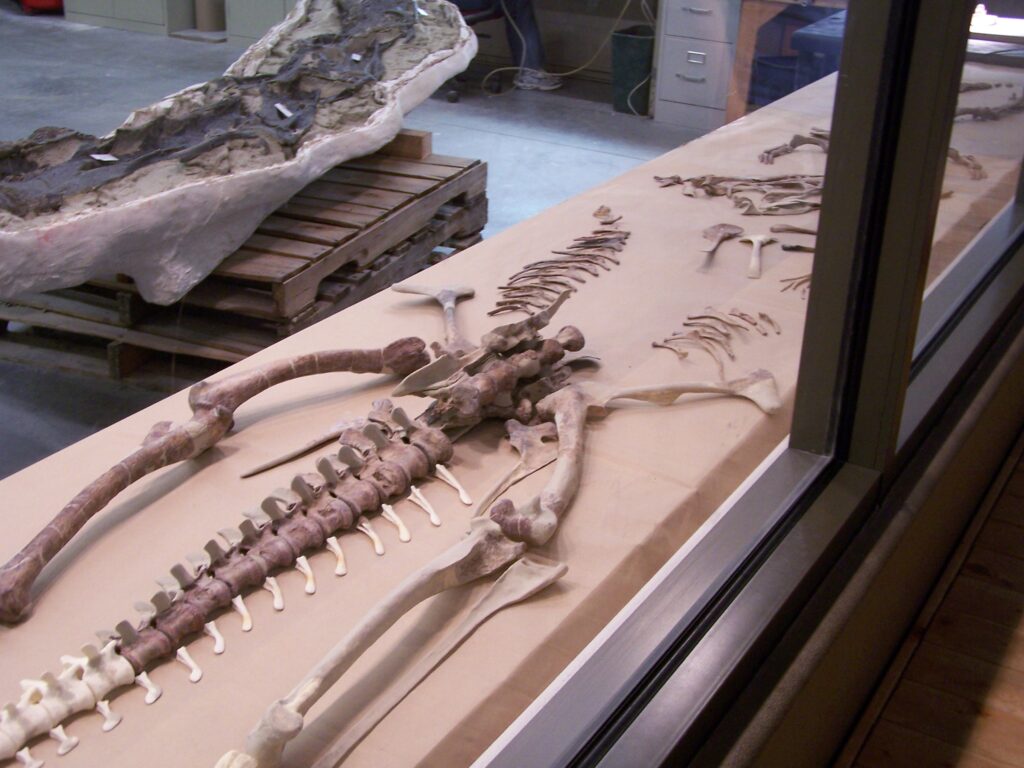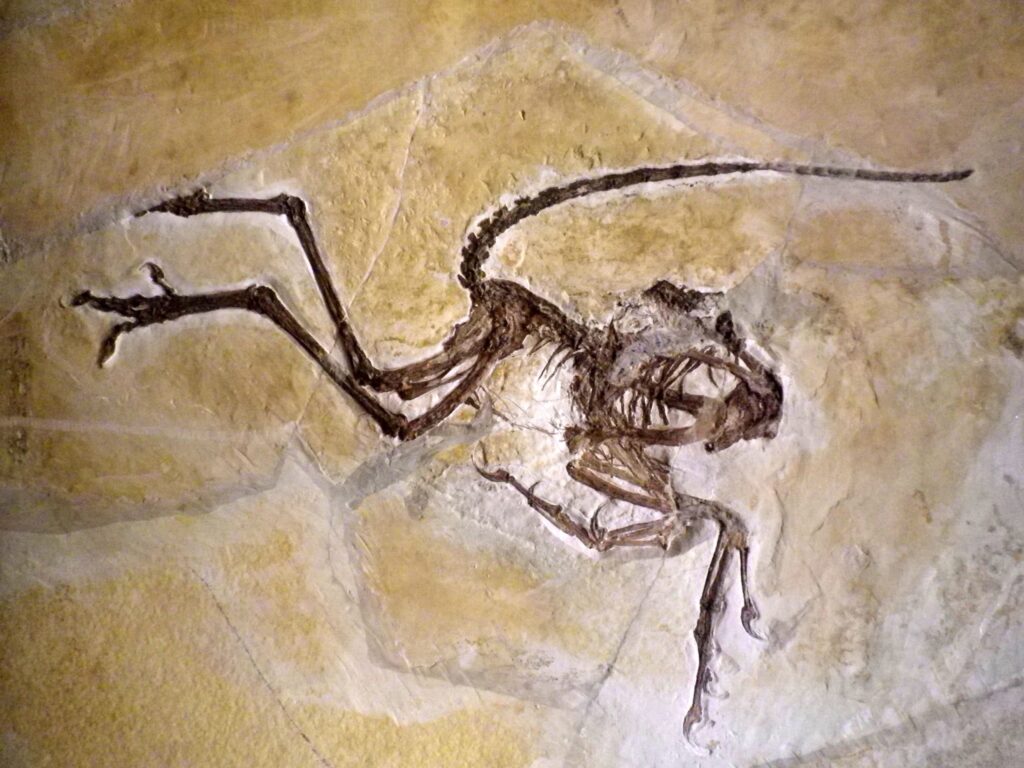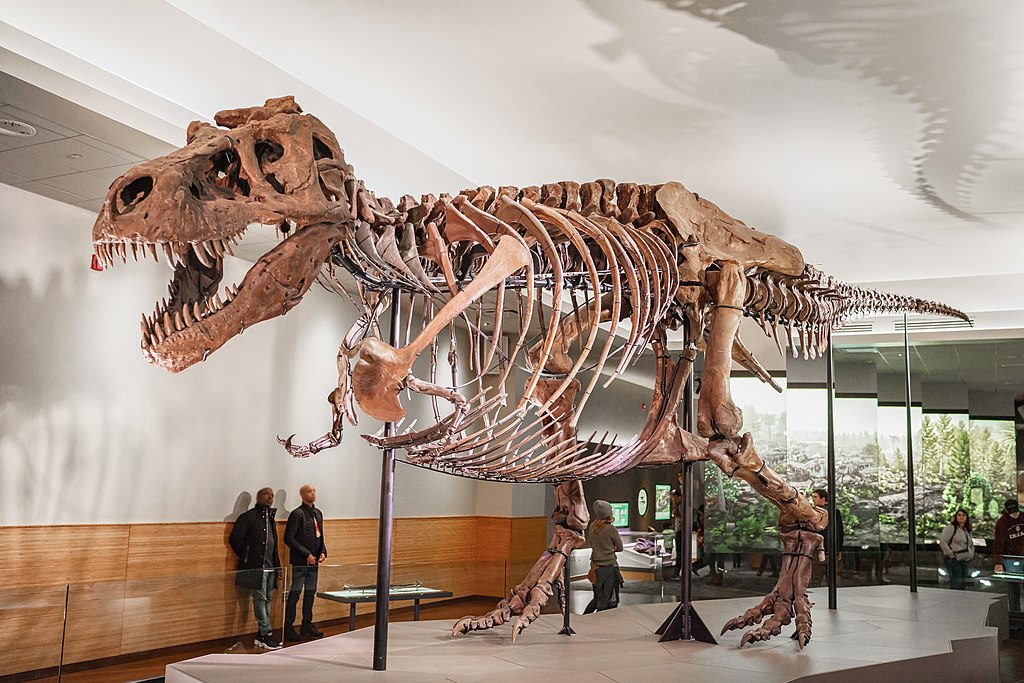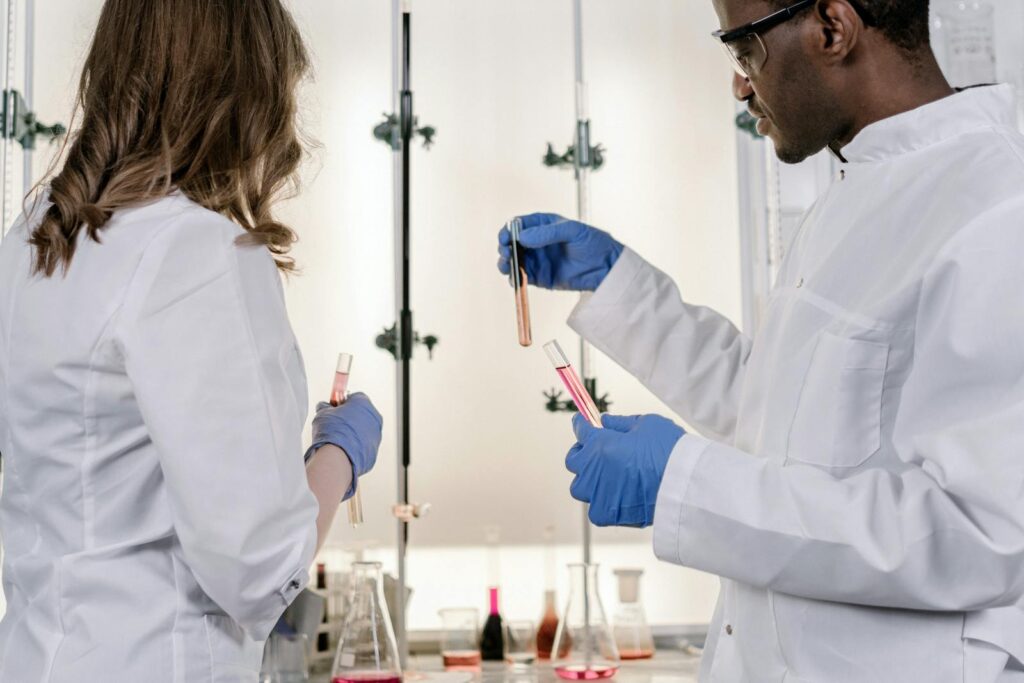The incredible journey from living dinosaur to museum display piece spans millions of years and involves remarkable physical and chemical transformations. When we gaze upon the imposing skeleton of a Tyrannosaurus rex or the delicate impression of an Archaeopteryx, we’re witnessing the end result of a complex natural process that preserves fragments of ancient life against seemingly impossible odds. Fossilization is nature’s way of creating time capsules that allow us to peek into Earth’s distant past. This remarkable transformation—from flesh and blood to mineralized stone—reveals the fascinating intersection of biology, geology, and chemistry that makes paleontology possible.
The Rarity of Fossilization

Fossilization is an exceptionally rare occurrence in the natural world, requiring a precise sequence of events to unfold in just the right way. For every dinosaur skeleton on display in a museum, countless millions of individual animals lived and died without leaving any trace in the fossil record. Scientists estimate that less than one percent of all species that ever lived have been preserved as fossils, creating significant gaps in our understanding of prehistoric life. The odds against an individual organism becoming fossilized are astronomical, as most animal remains are quickly consumed by scavengers or decomposed by bacteria and fungi. Only when circumstances align perfectly—rapid burial, appropriate sediment type, and specific chemical conditions—can the fossilization process begin. This rarity makes each discovered fossil a precious scientific treasure, representing a statistically improbable window into ancient ecosystems.
The Critical First Hours After Death

The moments immediately following a dinosaur’s death are crucial to its potential preservation as a fossil. In most cases, exposure to the elements leads to rapid decomposition, with soft tissues being the first to deteriorate under the assault of bacteria, fungi, and scavengers. A dinosaur carcass left exposed on a prehistoric landscape might be completely disarticulated and scattered within days or weeks, eliminating any chance of fossilization. The preservation process typically begins only when something interrupts this natural cycle of decomposition. Rapid burial—perhaps by a sudden sandstorm, volcanic ash fall, or river flood—provides the essential first step by protecting the remains from scavengers and significantly slowing decomposition by reducing oxygen availability. This quick entombment effectively creates a race against time, shielding the remains long enough for the slower chemical processes of fossilization to begin their work. The specific environmental conditions during these critical first hours largely determine whether any trace of the animal will survive for millions of years.
Permineralization: Nature’s Preservation Method

Permineralization represents one of the most common and effective processes by which dinosaur bones transform into fossils. Once buried, groundwater seeps through the sediment surrounding the remains, carrying dissolved minerals through the porous structure of bones. As this mineral-rich water infiltrates the microscopic spaces within the bone tissue, it deposits these minerals—commonly silica, calcite, or pyrite—which gradually fill in the cellular structures and tiny voids. This process effectively turns the bone into a stone replica of itself while maintaining much of the original microscopic structure. Remarkably, permineralization can preserve cellular details with such fidelity that paleontologists can sometimes identify blood vessel channels and even bone cells called osteocytes. The specific minerals involved in permineralization often depend on the local geology, which explains why fossils from different formations may have distinctive colors and preservation qualities. This mineral replacement typically takes thousands to millions of years to complete, gradually increasing the fossil’s durability and resistance to weathering.
The Role of Sediment Type

The type of sediment that buries a dinosaur plays a crucial role in determining whether fossilization occurs and what quality of preservation might result. Fine-grained sediments like clay and silt generally provide superior preservation compared to coarse materials like gravel or sand. These finer particles create a tighter seal around the remains, limiting oxygen exposure and slowing decomposition while simultaneously capturing more detailed impressions of the organism. Certain chemical environments prove particularly conducive to fossilization—sediments rich in iron or calcium often facilitate mineral replacement, while highly acidic or alkaline environments can either accelerate decomposition or enhance preservation depending on specific circumstances. Marine environments, with their steady accumulation of fine sediments and often oxygen-poor conditions at the seafloor, have historically produced some of Earth’s most extraordinary fossil deposits. The pressure exerted by accumulating sediment layers also plays a role, compacting the remains and surrounding material into solid rock over time. Paleontologists have become skilled at identifying ancient sedimentary environments that offer the highest probability of yielding well-preserved fossils.
Soft Tissue Preservation: The Rare Exception

While bones and teeth frequently survive the fossilization process due to their naturally durable mineral composition, soft tissue preservation represents an exceedingly rare phenomenon that offers exceptional scientific value. In extraordinary circumstances, impressions of skin, feathers, internal organs, and even the outlines of muscles can be preserved through various mechanisms. Anoxic environments—those lacking oxygen—dramatically slow bacterial decomposition, giving mineral replacement processes time to operate on soft tissues. Extremely fine sediments like volcanic ash can capture impressions with remarkable detail before the organic material fully decomposes. Perhaps most extraordinary are cases of mummification, where rapid dehydration preserves skin and other tissues, sometimes maintaining cellular structures that can later undergo mineralization. The discovery of preserved soft tissues has revolutionized dinosaur paleontology in recent decades, with findings like collagen protein fragments in Tyrannosaurus specimens challenging assumptions about how long organic materials can persist. These exceptional fossils provide crucial information about dinosaur appearance, physiology, and evolution that skeletal remains alone cannot reveal.
The Time Factor: Millions of Years in the Making

The transformation from dinosaur remains to fully mineralized fossil unfolds across a staggering timescale that dwarfs human comprehension. While the initial stages of preservation—burial and the beginning of mineral infiltration—may occur relatively quickly in geological terms, complete fossilization typically requires hundreds of thousands to millions of years. During this extended period, the chemical composition of the remains gradually shifts as original organic materials are replaced by minerals atom by atom in an almost unimaginably slow process. The weight of accumulating sediments above compresses the developing fossil, while heat and pressure from Earth’s dynamic geology further alter its physical structure. Groundwater continues to percolate through the developing fossil, potentially introducing new minerals or dissolving existing ones depending on the chemical environment. This exceedingly gradual transformation explains why dinosaur fossils are typically found in sedimentary rock layers dating to specific periods—mainly the Mesozoic Era spanning from 252 to 66 million years ago. The immense time involved in fossilization serves as a humbling reminder of the vast geological processes that have shaped our planet’s history.
Cast and Mold Fossils: Nature’s Impressions

Not all dinosaur fossils form through direct mineralization of bones; some develop through equally fascinating processes involving natural casting and molding. When a dinosaur’s remains completely dissolve after burial, they may leave behind a cavity in the surrounding sediment that perfectly preserves the external shape of the organism—creating what paleontologists call a mold fossil. If this cavity subsequently fills with minerals precipitated from groundwater or new sediments, a cast fossil forms, recreating the three-dimensional structure of the original organism without containing any of its actual material. These processes can preserve remarkable details, including skin textures, scale patterns, and even subtle anatomical features that might be lost in other fossilization methods. Cast and mold fossils prove particularly valuable for studying soft-bodied organisms that rarely fossilize through other means. In dinosaur paleontology, natural casts of footprints and skin impressions provide crucial information about movement patterns, behavior, and external appearance that complement the skeletal record. The interplay between dissolution, cavity formation, and infilling creates these impressive natural replicas that allow paleontologists to study extinct life forms in remarkable detail.
Geological Upheaval: From Burial to Discovery

The journey of a dinosaur fossil from its initial burial site to discovery involves dramatic geological processes operating across continental scales. Over millions of years, the sedimentary layers containing fossils may undergo tectonic uplift, transforming ancient seabeds or floodplains into mountains or plateaus. These massive movements can tilt, fold, or even invert fossil-bearing rock layers, dramatically changing their orientation and location from where they originally formed. Erosion then becomes the paleontologist’s ally, as wind, water, and ice gradually wear away covering rocks to expose fossils at the surface. This natural excavation process explains why rich fossil localities often occur in badlands, canyons, and cliffs—places where erosion actively strips away rock layers. The interaction between uplift and erosion creates a narrow window of opportunity for fossil discovery; too little erosion leaves fossils buried beyond reach, while too much can destroy them entirely. The famous dinosaur-bearing formations of places like Montana’s Hell Creek, Alberta’s Dinosaur Provincial Park, and Mongolia’s Gobi Desert represent perfect geological conditions where ancient fossil-rich layers have been uplifted and precisely eroded to reveal their prehistoric treasures.
Exceptional Preservation: Lagerstätten Deposits

Certain extraordinary fossil deposits, known as Lagerstätten (from German, meaning “storage places”), preserve dinosaurs and other organisms with such exceptional detail that they revolutionize scientific understanding. These rare geological formations result from perfect preservation conditions—often including rapid burial, low oxygen, minimal disturbance, and favorable chemistry—that capture not just bones but sometimes entire ecosystems in remarkable detail. While most famous Lagerstätten date from periods before or after the dinosaur era, sites like the Yixian Formation in China have yielded spectacularly preserved dinosaur specimens with intact feathers, skin impressions, stomach contents, and even color patterns. These exceptional fossil beds often result from catastrophic events such as volcanic eruptions or toxic algal blooms that killed and buried organisms rapidly while creating chemical conditions inhibiting decomposition. Unlike typical fossil sites that yield scattered, incomplete remains, Lagerstätten often preserve complete animals in life positions with soft tissues intact. These windows into ancient ecosystems allow paleontologists to study prehistoric life with a level of detail approaching what biologists observe in living organisms, providing crucial insights about behavior, appearance, and ecological relationships that would otherwise remain forever mysterious.
Modern Analytical Techniques: Seeing Beyond the Stone

Contemporary paleontology has revolutionized the study of fossilized dinosaurs through sophisticated analytical techniques that extract information invisible to previous generations of scientists. Advanced imaging technologies like computed tomography (CT) scanning allow researchers to peer inside fossils non-destructively, revealing internal structures, brain cases, and even growth rings in bones that tell us about dinosaur development and aging. Scanning electron microscopy can identify microscopic structures preserved at the cellular level, sometimes revealing blood vessels, cell structures, and tissue organization in exceptional specimens. Chemical analysis techniques including mass spectrometry can detect trace elements and sometimes even degraded organic compounds that survived the fossilization process, providing clues about diet, physiology, and environmental conditions. Paleontologists now routinely employ synchrotron radiation—accelerated light particles from specialized research facilities—to examine fossils at the molecular and atomic levels, identifying pigment structures that reveal dinosaur coloration patterns. These technological advances have transformed fossilized dinosaurs from static museum pieces into dynamic sources of biological information, allowing scientists to address questions about ancient life that would have seemed impossible to answer just decades ago.
Fossil Preparation: Revealing the Hidden Record

The transition from raw, field-collected fossil to scientific specimen involves meticulous preparation work that can take months or even years to complete. When a dinosaur fossil is first discovered, it typically remains partially embedded in a protective matrix of surrounding rock that must be carefully removed. Fossil preparators employ specialized tools ranging from pneumatic engravers and dental picks to microscopes and chemical solutions to slowly free the fossilized bone from its stone encasement without causing damage. This delicate process requires intimate knowledge of both geology and anatomy to distinguish fossil material from matrix, especially when working with fragile specimens or complex structures. For large dinosaur skeletons, preparators must often stabilize fragile bones with hardening solutions or create custom supports to prevent fractures during the preparation process. The work combines aspects of science, craftsmanship, and art, with preparators making crucial decisions that affect how completely and accurately the fossil can be studied. Modern preparation labs increasingly employ technologies like microscope-mounted cameras and 3D scanning to document each stage of the process, preserving information about the fossil’s original context that might otherwise be lost during preparation.
Bringing Dinosaurs Back to Life: Reconstructing from Fossils

The ultimate goal of studying fossilized dinosaurs extends beyond collecting and describing their remains to reconstructing these animals as they existed in life. Paleontologists collaborate with anatomists, artists, and increasingly, computer scientists to transform fossil evidence into scientifically accurate representations of extinct creatures. This reconstruction process begins with the skeleton, using comparative anatomy to determine how bones connected and articulated, what range of motion was possible, and how muscles likely attached to create movement. Soft tissue evidence, where available, provides crucial constraints on external appearance, while phylogenetic bracketing—examining features in closely related living animals—helps inform aspects of biology not directly preserved in fossils. Modern dinosaur reconstructions incorporate biomechanical modeling to understand how these animals moved, computational fluid dynamics to study their thermoregulation, and finite element analysis to test how their skulls functioned during feeding. Digital technologies now enable scientists to create increasingly sophisticated simulations of dinosaur physiology, movement, and behavior based directly on fossil evidence. These reconstructions represent hypotheses about extinct life forms, constantly refined as new fossil discoveries and analytical methods provide fresh insights into how dinosaurs lived, moved, and interacted with their ancient environments.
Conservation Challenges: Preserving Our Fossil Heritage

The fossilization process that transforms dinosaur remains into stone provides remarkable preservation, but these irreplaceable scientific treasures face numerous threats once exposed. Natural weathering begins immediately upon a fossil’s exposure, with freeze-thaw cycles, rainfall, and temperature fluctuations gradually degrading even well-mineralized specimens. Human activities pose even greater dangers, with illegal collection removing scientifically valuable specimens from their context and potentially damaging them through improper excavation techniques. Commercial fossil markets create financial incentives that sometimes lead to destructive collection practices and the loss of specimens to private collections inaccessible to researchers. Even properly collected museum specimens require careful conservation, as pyrite disease, mineral efflorescence, and other chemical reactions can damage fossils in storage. Conservators employ specialized techniques to stabilize fossils, including custom mounting systems, climate-controlled environments, and protective consolidants that prevent degradation. The scientific community increasingly recognizes that proper excavation documentation, including detailed field notes, photographs, and GPS coordinates, preserves crucial contextual information that forms part of the fossil’s scientific value. Balancing public access to these inspiring remnants of prehistoric life with their long-term preservation represents an ongoing challenge for museums and research institutions worldwide.
Conclusion

The journey from living dinosaur to mineralized fossil represents one of nature’s most extraordinary transformations. This complex process—requiring specific environmental conditions, precise chemical interactions, and vast spans of time—explains why dinosaur fossils are simultaneously so rare and so scientifically valuable. Each discovered specimen represents a statistical miracle, having survived millions of years of geological processes to reach us as a tangible connection to Earth’s distant past. As scientific techniques continue to advance, these stone remnants of ancient life reveal increasingly detailed information about dinosaur biology, behavior, and evolution. When we stand before a towering dinosaur skeleton in a museum, we’re witnessing not just an impressive display, but the culmination of a remarkable natural process that bridges deep time—connecting us to ancient worlds we can explore only through the silent testimony of fossils.




